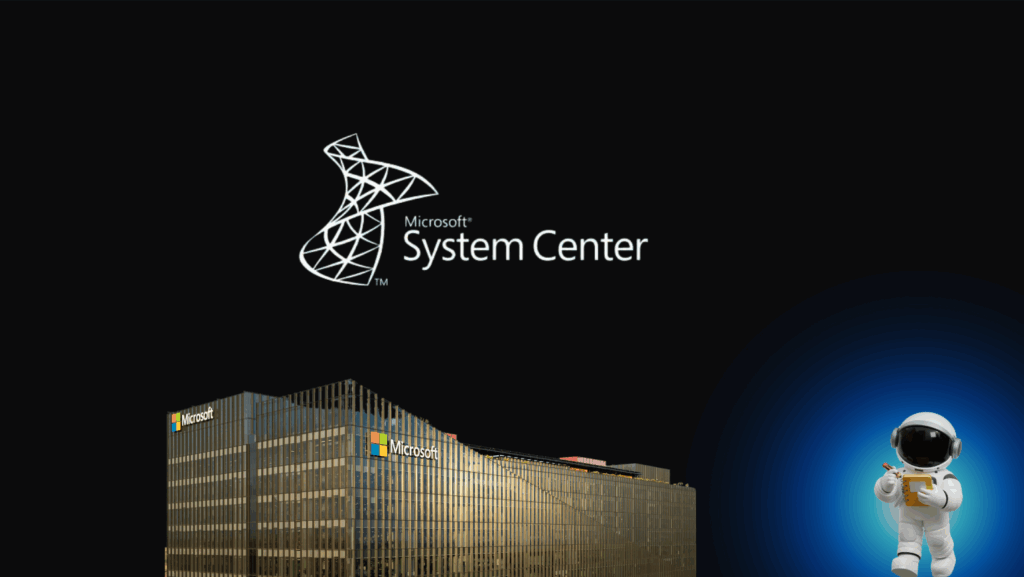Microsoft System Center 2025 Licensing Guide

Microsoft System Center 2025 represents the latest evolution in Microsoft’s comprehensive datacenter management solution. It provides organizations with powerful tools for monitoring, automating, and provisioning their software-defined datacenter infrastructure. The solution enhances productivity and security through seamless integration with Azure security, backup, and log analytics tools.
System Center 2025 continues Microsoft’s commitment to providing robust management capabilities while maintaining licensing consistency with previous versions. This guide outlines the essential licensing information to help IT professionals and decision-makers understand their options, ensure compliance, and optimize costs.
Editions Overview
System Center 2025 maintains the two-edition structure that has proven effective for organizations with varying virtualization needs. The licensing model differentiates these editions primarily by virtualization rights, while ensuring both editions provide the same robust feature set.
| Feature | Datacenter Edition | Standard Edition |
|---|---|---|
| Target Environment | Highly virtualized datacenters and cloud environments | Lightly virtualized or physical environments |
| OSEs/Hyper-V Containers | Unlimited | 2 per license |
| Windows Server Containers | Unlimited | Unlimited |
| Suggested MSRP (16-core) | $3,968 | $1,455 |
| Best suited for | Servers with 8+ VMs or dynamic VM allocation | Servers with fewer than 8 VMs or static workloads |
The edition choice should be based primarily on virtualization density. Organizations with highly virtualized environments will typically find the Datacenter Edition more cost-effective despite its higher initial cost, as it eliminates the need to track and license individual virtual machines. For environments with limited virtualization, the Standard Edition provides the same functionality at a lower price point.
Components Included in Both Editions
System Center 2025 includes a comprehensive suite of management tools that work together to provide end-to-end datacenter management capabilities. Each component addresses specific management needs while integrating with the broader System Center ecosystem.
| Component | Primary Function | Key Capabilities |
|---|---|---|
| Configuration Manager | Desktop, server, and mobile device management | Software deployment, inventory, compliance settings, security policies |
| Data Protection Manager | Backup and recovery capabilities | Continuous data protection, centralized backup management, Azure Backup integration |
| Endpoint Manager | Endpoint security and compliance | Security monitoring, compliance enforcement, mobile device management |
| Operations Manager | Infrastructure and application monitoring | Performance tracking, availability management, alert notification |
| Orchestrator | IT process automation | Workflow creation, cross-platform automation, integration with other components |
| Service Manager | IT service request and incident management | Incident tracking, problem management, change control, service catalog |
| Virtual Machine Manager | Virtualization infrastructure management | VM provisioning, host management, software-defined networking and storage |
These components provide a unified management experience across physical, virtual, and cloud environments. The consistent feature set across editions ensures that organizations can select their edition based on virtualization needs rather than functionality requirements.
Licensing Models
System Center 2025 employs a dual licensing approach that addresses both server and client management needs. This model aligns with Windows Server licensing to provide consistency and simplify license management for organizations using both products.
Server Management Licenses (Server MLs)
Server Management Licenses follow a core-based model that scales with the computing capacity of the managed infrastructure. This approach ensures that licensing accurately reflects the resources being managed.
| Aspect | Details | Additional Information |
|---|---|---|
| Licensing Metric | Physical cores in the server | All physical cores must be licensed |
| Minimum Requirements | 8 cores per processor, 16 cores per server | Even if actual core count is lower |
| License Packaging | Sold in packs of two cores | Minimum 8 packs per server |
| Standard Edition Rights | 2 OSEs per license (stack for more) | For every 2 additional VMs, all cores must be licensed again |
| Datacenter Edition Rights | Unlimited OSEs per license | No additional licensing regardless of VM count |
The core-based licensing model provides a consistent approach that aligns with modern datacenter architecture. By focusing on physical cores rather than processors, the model scales appropriately with varying server configurations and capabilities.
For organizations transitioning from previous versions with Software Assurance, core grants ensure that existing virtualization rights are maintained during the migration to the core-based model.
Client Management Licenses (Client MLs)
Client Management Licenses address the management of non-server devices such as desktops, laptops, and mobile devices. The flexible options allow organizations to choose the most cost-effective approach based on their specific environment.
| License Type | Coverage | Best For |
|---|---|---|
| Per User ML | Any OSE accessed by one user | Environments where users access multiple devices |
| Per OSE ML | One OSE accessed by any user | Shared device scenarios (kiosks, shift workers) |
| Device ML | Any OSE on one device | Organizations standardized on device-based licensing |
Client management licensing provides the flexibility needed to accommodate various organizational structures and device usage patterns. Organizations can select the model that best aligns with their environment, or even mix models to optimize licensing costs across different scenarios.
Core Licensing Requirements
Understanding the specific requirements for core-based licensing is essential for ensuring compliance and optimizing costs. System Center 2025 follows clear rules regarding core counting and licensing minimums.
| Requirement | Description | Implementation Details |
|---|---|---|
| Core Coverage | All physical cores must be licensed | Count all cores across all processors in each managed server |
| Minimum Licensing | 8 cores per processor, 16 cores per server | Apply these minimums even if actual core count is lower |
| Purchase Units | 2-core packs (minimum 8 packs per server) | Calculate total packs needed based on core count and minimums |
| Standard Edition Stacking | For every 2 additional VMs beyond initial 2, all cores must be licensed again | Example: 6 VMs requires 3 sets of Standard licenses |
| Datacenter Edition | No additional licenses needed regardless of VM count | Simplifies management for highly virtualized environments |
The core licensing model includes provisions for various server configurations, ensuring that licensing scales appropriately with the computing capacity being managed. Organizations should carefully inventory their server infrastructure to determine the total core count and apply the appropriate minimums when calculating license requirements.
Licensing Scenarios
Different IT environments require different licensing approaches. Understanding how System Center 2025 licensing applies to various scenarios helps organizations make informed decisions about their licensing strategy.
Scenario Comparison
| Scenario | Environment Description | Recommended Edition | Licensing Requirement | Rationale |
|---|---|---|---|---|
| Physical Servers | 10 servers, 2 processors (8 cores each), no VMs | Standard | 80 2-core packs total | Standard Edition is cost-effective for non-virtualized environments |
| Virtualized Environment | 4 hosts, 2 processors (12 cores each), 15 VMs per host | Datacenter | 48 2-core packs total | High VM density makes Datacenter more economical |
| Mixed Environment | Varying VM density across servers | Standard for low-density, Datacenter for high-density | Based on per-server calculation | Targeted edition selection optimizes costs |
These scenarios illustrate how the licensing model adapts to different environments. By analyzing their specific infrastructure and virtualization needs, organizations can determine the most cost-effective licensing approach for their unique situation.
For hybrid environments that span on-premises and cloud infrastructure, additional considerations may apply. Organizations should evaluate how their management needs extend across these environments and ensure appropriate licensing for all managed components.
Cost Optimization Strategies
Strategic license planning can significantly reduce the total cost of ownership for System Center 2025 while ensuring adequate management capabilities. Several approaches can help organizations optimize their licensing investments.
| Strategy | Implementation | Expected Benefits |
|---|---|---|
| Edition Selection | Use Standard for <8 VMs per server, Datacenter for ≥8 VMs | Balances initial cost with long-term flexibility |
| Virtualization Consolidation | Reduce total core count by hosting more VMs on fewer servers | Decreases total licensing requirements |
| Client Licensing Optimization | Choose based on user-to-device ratio in your environment | Minimizes client management licensing costs |
| License Management | Maintain centralized inventory and document assignments | Ensures compliance and prevents over-licensing |
Effective license optimization requires regular review of the environment and licensing needs. As virtualization density changes or new servers are deployed, organizations should reassess their licensing strategy to ensure it remains optimal.
Software Assurance provides additional optimization opportunities through benefits such as version upgrade rights and license mobility. Organizations should evaluate whether these benefits justify the additional cost based on their specific needs and upgrade cycles.
Common Licensing Pitfalls
Understanding common licensing mistakes can help organizations avoid compliance issues and unnecessary costs. Several pitfalls frequently arise in System Center licensing.
| Pitfall | Prevention | Impact of Non-Compliance |
|---|---|---|
| Undercounting physical cores | Inventory all servers and document core counts | Potential licensing shortfall and compliance risk |
| Misunderstanding virtualization rights | Review edition differences and VM density requirements | Unexpected costs when adding VMs |
| Improper license assignment | Document all license assignments to specific servers | License mobility limitations and compliance issues |
| Overlooking client management | Include client devices in licensing strategy | Incomplete management solution and compliance gaps |
| Software Assurance lapses | Track renewal dates and understand implications | Loss of upgrade rights and additional benefits |
Regular license reviews and clear documentation help prevent these common pitfalls. Organizations should establish processes for tracking license assignments, server configurations, and virtualization changes to maintain compliance and optimize costs.
Frequently Asked Questions
Organizations often have specific questions about System Center 2025 licensing. These answers address the most common inquiries and clarify potential areas of confusion.
| Question | Answer | Additional Context |
|---|---|---|
| What’s the main difference between editions? | Virtualization rights – Standard allows 2 OSEs, Datacenter allows unlimited OSEs | Feature sets are identical between editions |
| How many core licenses needed? | All physical cores must be licensed (min 8/processor, 16/server) | Core count determines total license requirement |
| Need to license VM cores? | No, licensing is based on physical cores in the host server | Virtual cores have no impact on licensing |
| When is Datacenter more cost-effective? | Typically when a server hosts 8-10 or more VMs | Break-even point depends on specific pricing |
| Can licenses be reassigned? | Without Software Assurance, no more frequently than every 90 days | SA provides greater reassignment flexibility |
Understanding these key aspects of System Center 2025 licensing helps organizations navigate the licensing process with confidence and ensure they are making informed decisions about their management infrastructure.
Software Assurance Benefits
Software Assurance provides additional benefits beyond the base license rights. For System Center 2025, these benefits can significantly enhance the value of the licensing investment.
| Benefit | Description | Business Value |
|---|---|---|
| Version Upgrade Rights | Access to new versions at no additional license cost | Protection against version obsolescence |
| License Mobility | Greater flexibility in reassigning licenses | Supports dynamic infrastructure changes |
| Training Vouchers | Access to training resources for IT staff | Enhanced skills for management effectiveness |
| 24×7 Support | Problem resolution support | Reduced downtime and faster issue resolution |
| Planning Services | Assistance with deployment planning | Optimized implementation and configuration |
Organizations should evaluate whether Software Assurance benefits justify the additional cost based on their specific needs, upgrade cycles, and support requirements. For environments with frequent changes or those planning to stay current with the latest versions, Software Assurance often provides significant value.
Additional Resources
Microsoft provides several resources to help organizations understand and implement System Center 2025 licensing effectively.
| Resource | URL | Purpose |
|---|---|---|
| System Center Website | https://www.microsoft.com/en-us/system-center/system-center-2025 | Product information and overview |
| Microsoft Licensing | https://www.microsoft.com/licensing/ | Detailed licensing information and programs |
| System Center Documentation | https://learn.microsoft.com/en-us/system-center/ | Technical documentation and deployment guides |
| Volume Licensing Service Center | https://www.microsoft.com/Licensing/servicecenter/ | License management for volume licensing customers |
| Microsoft Partner Network | https://partner.microsoft.com/ | Connect with partners for licensing assistance |
These resources provide additional guidance and support for organizations implementing System Center 2025. Consulting these resources can help clarify specific licensing questions and ensure optimal deployment of the management solution.








